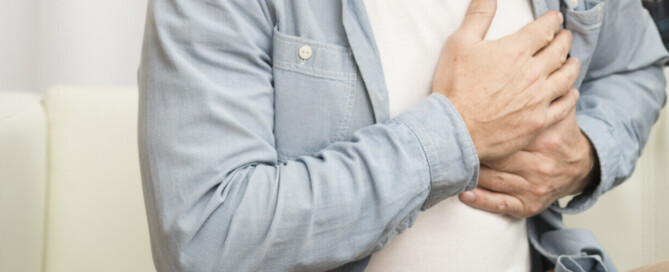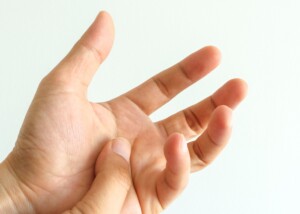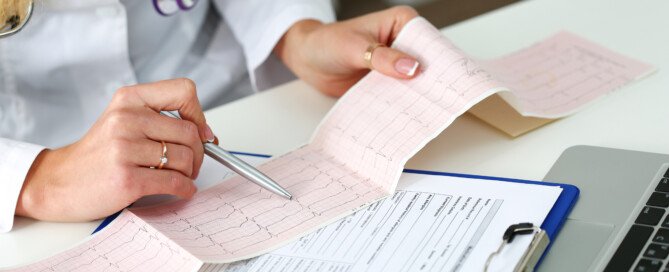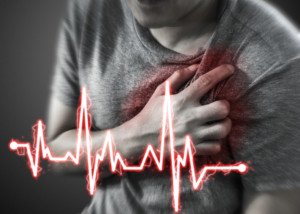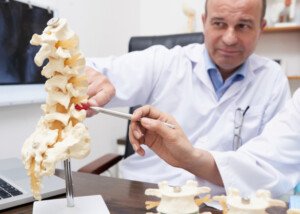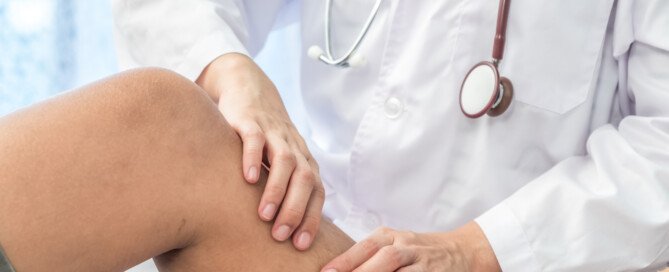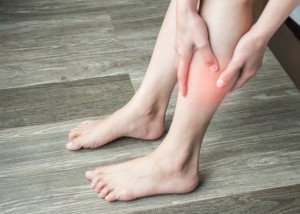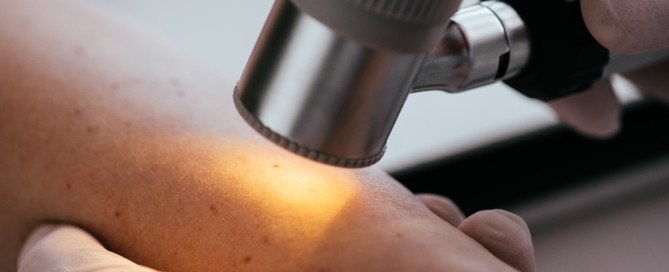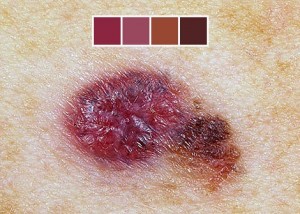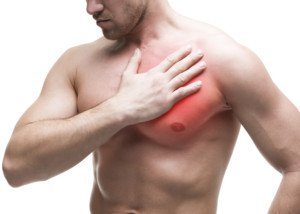Does Heart Rate Slow Down During an Angina Attack?
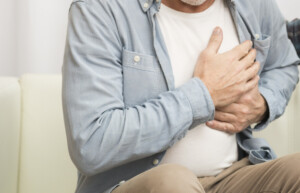
Seems that during an angina attack, the heart rate would always speed up and never slow down, being that oxygen supply to the heart during an anginal episode is shorted.
An elevated heart rate means more oxygen to the heart, right? (more…)
Cold Ankles for No Reason? Causes and Solutions

If your ankles seem to be cold on a frequent basis, the cause may be disease.
Not disease of the skin, but conditions such as peripheral vascular disease.
It is not normal to have chilly ankles without an obvious explanation such as wearing only ankle-high booties on your feet in a cool environment while sitting at a computer.
“While most people complain about hot or swollen ankles, some people experience cold ankles which can also be uncomfortable,” says Walter Gaman, MD, FABFM, board certified in family medicine and the author of several award-winning books including “Age to Perfection: How to Thrive to 100, Happy, Healthy, and Wise.”
Reasons for Chilly Cold Ankles Include Disease
“There are a variety of reasons that ankles can be cold,” says Dr. Gaman.
“The most common and obvious reason is that the ankle is exposed to cold air.
“This could happen in the winter or spring, but the summer is the most likely time.
“This is because most people don’t wear socks in the summer, so their ankles are exposed to the air conditioner.”
If your ankles feel chilly, put on a pair of socks. If you’re healthy, the socks should instantly correct the problem. But if they don’t…you may have a problem.
“Medical conditions that can lead to cold ankles include: peripheral vascular disease, Raynaud’s phenomenon and rheumatoid arthritis,” says Dr. Gaman.
What is peripheral vascular disease?
Also known as peripheral artery disease, it’s when the arteries in your legs are narrowed, reducing blood flow.
Reduced blood flow to the feet will make them feel cold.
In addition to this symptom there is often pain when walking.
Think of PVD as “heart disease in the legs.”
The process that causes narrowing of the heart’s coronary arteries is the same process that reduces the diameter of the leg’s arteries.
What is Raynaud’s disease?
This is far less serious than PVD, and results in cold and numb fingers and toes in response to cold temperature or even mental stress.
Small arteries that supply these areas with blood become constricted.
The ankles may be affected.
Dr. Gaman says, “If your cold ankles are also painful, seek medical attention.
“Ankles that are cold intermittently, but are not painful or discolored, are most likely not serious.”

Dr. Gaman is with Executive Medicine of Texas and is with the Staying Young Radio Show 2.0 podcast.
 Lorra Garrick has been covering medical, fitness and cybersecurity topics for many years, having written thousands of articles for print magazines and websites, including as a ghostwriter. She’s also a former ACE-certified personal trainer.
Lorra Garrick has been covering medical, fitness and cybersecurity topics for many years, having written thousands of articles for print magazines and websites, including as a ghostwriter. She’s also a former ACE-certified personal trainer.
Is There a Such Thing As Restless Arm Syndrome?
Is “restless arm syndrome” a real condition? Why would restlessness occur only in the legs? (more…)
Can a General Physician Read an EKG?

Just how well can a general practitioner interpret an EKG of your heart?
This is a very fair question. After all, sooner or later, medical students will be shown how to read an EKG (also known as an ECG).
Furthermore, some patients may not feel comfortable that a general doctor, or one who is not a cardiologist, is the only doctor who’s interpreting their EKG.
What also gets tossed into the equation is when a computer decides when an EKG is “abnormal.”
“An electrocardiogram, also referred to as an EKG or ECG, is used to detect electrical activity within the heart,” says Walter Gaman, MD, FABFM, board certified in family medicine and the author of several award-winning books including “Age to Perfection: How to Thrive to 100, Happy, Healthy, and Wise.”
“An abnormal tracing could be the sign of an active or previous heart attack, poor blood flow (ischemia) or an abnormal rhythm,” continues Dr. Gaman.
“GP or general practitioner refers to someone who is not board certified. Reading and interpreting an EKG for emergency purposes is something most physicians learn during residency.
“A general practitioner may or may not incorporate that skill into practice later during their profession.
“Most physicians who are board certified, such as internists and family medicine physicians, use EKG within the office and have had continuing education on EKG interpretation, as it pertains to overall heart health and disease management.”
The type of doctor who specializes in abnormal heart rhythms (arrhythmias) is an electrophysiologist. This is a sub-specialty of cardiology.
If you’re concerned about your non-cardiologist doctor’s ability to interpret your recent or future EKG, then certainly you should bring it to a cardiologist — or have a new EKG taken in a cardiologist’s office.
Make sure that it has 12 leads. A 12-lead EKG provides a comprehensive view of the heart’s electrical activity from multiple angles.
Each lead captures a different perspective, allowing accurate detection of arrhythmias, blockages, heart attack and other cardiac conditions.
Six limb leads observe the heart’s electrical activity in the frontal plane, while six chest leads monitor the horizontal plane.
This multidimensional view enhances diagnostic precision.

Dr. Gaman is with Executive Medicine of Texas and is with the Staying Young Radio Show 2.0 podcast.
 Lorra Garrick has been covering medical, fitness and cybersecurity topics for many years, having written thousands of articles for print magazines and websites, including as a ghostwriter. She’s also a former ACE-certified personal trainer.
Lorra Garrick has been covering medical, fitness and cybersecurity topics for many years, having written thousands of articles for print magazines and websites, including as a ghostwriter. She’s also a former ACE-certified personal trainer.
.
Top image: Shutterstock/megaflopp
Resting Heart Rate Is 95: Does this Mean Heart Trouble?
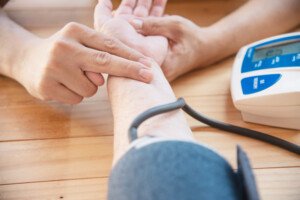
Are you unnerved by those studies showing a link between resting heart rates of 95 and all-cause mortality? Isn’t an RHR of 75 better than 95? (more…)
Core Exercises to Prevent Spinal Stenosis in Healthy People

You don’t want to wait till you have spinal stenosis to wonder what kind of exercises could have possibly prevented it.
Spinal stenosis tends to be progressive. In its severe form, the patient walks or stands way stooped over.
This condition can begin in middle age, even sooner.
The time for prevention strategies is when you’re young, not old. (more…)
Can a Low Back Problem Cause Pain in the Shins?
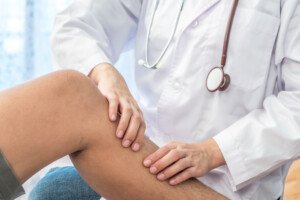
Do you suffer from unexplained pain or aching in the shins?
The origin of this problem could be in your lower back.
Shins that hurt is a very common symptom, especially among runners.
But people who never run or jog can also get pain in the lower legs. (more…)
What Is a Dermatoscope?
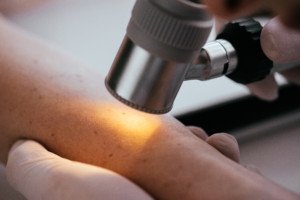
What exactly is a dermatoscope? First off, next time you see a dermatologist for a skin cancer screening, make sure the doctor is using a dermatoscope.
Sometimes, a dermatoscope is incorrectly called a dermoscope. “Derma” means skin, and “scope” means to view.
A dermatologist, when examining a patient’s moles for signs of melanoma, should use a dermatoscope.
“This is a specialized dermatologist’s tool that uses polarized light and magnification to spot irregularities in the skin,” says Bobby Buka, MD, a NYC dermatologist and CEO of The Dermatology Specialists, and author of “Buka’s Emergencies in Dermatology” and “Top 50 Dermatology Case Studies for Primary Care.”
“It’s a handheld device that your doctor can use to inspect spots wherever they occur,” continues Dr. Buka.
“The polarization of the light it emits allows us to more clearly see pigment inconsistencies that can indicate melanomas or other skin problems.”
A more sophisticated model has several magnifying lenses together that are in a tube with a polarized or non-polarized light source.
The more complex the instrument, the more information a doctor will get when viewing your moles and other skin lesions.
For instance, a seborrheic keratosis may look very much like a common mole – until the doctor views the former through a dermatoscope.
The newest instruments have a bright LED light encircling the magnifying lens. There may also be a digital camera, which is very useful when a mole wants to be tracked over time.
To get a close-up inspection of the skin, a doctor will place the dermatoscope against the skin and look very close into it.
The tool will likely have liquid that’s between the lens and the skin to reduce light glare and scatter, improving visibility of the lesion.
When a normal mole is viewed through this device, it can look “bad” to the layperson, because the layperson doesn’t know what’s normal or what’s suspicious.
This is why laypeople should not purchase these devices, which are sold online.
A layperson with health anxiety will set himself up for much anxiety by getting into the habit of inspecting their moles with a dermatoscope.
Dermatologists spend enormous hours of training and learning what characteristics in a mole to look for that are suspicious for melanoma.
After looking at thousands of different kinds of skin lesions that can pass for melanoma, as well as actual melanomas, doctors will still be crafting their expertise at knowing what they’re looking at.
Can a Dermatoscope Diagnose Melanoma?
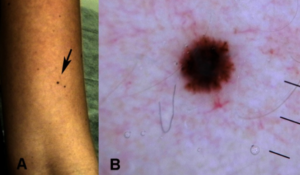
Dermatol Pract Concept. 2013 Apr Copyright ©2013 Pellizzari et al
There’s no doubt that this tool can show classic features of melanoma.
But it is not a diagnostic tool.
A doctor will inform the patient that the lesion should be biopsied.
Not all the biopsy results, however, come back positive for disease.
A mole can look suspicious under the magnifying lens but come back benign.
Other Uses of a Dermatoscope
• Evaluation of skin capillaries
• Assess patterns of hair follicles
• Examine other conditions like actinic keratosis
Remember, don’t go buying a dermatoscope to check your moles! You don’t know what to look for. Leave it up to your dermatologist.
 Dr. Buka is the contributing Founder and Chief Science Officer of the First Aid Beauty skin care line. firstaidbeauty.com
Dr. Buka is the contributing Founder and Chief Science Officer of the First Aid Beauty skin care line. firstaidbeauty.com
 Lorra Garrick has been covering medical, fitness and cybersecurity topics for many years, having written thousands of articles for print magazines and websites, including as a ghostwriter. She’s also a former ACE-certified personal trainer.
Lorra Garrick has been covering medical, fitness and cybersecurity topics for many years, having written thousands of articles for print magazines and websites, including as a ghostwriter. She’s also a former ACE-certified personal trainer.
.
Top image: Shutterstock/LightField Studios
Do Heart Attacks Always Cause a Loss of Consciousness?

Have you ever wondered if heart attacks always cause a loss of consciousness, even if for just a few moments?
Chest Pain from Deadlifts: Cause, Solution by Chiropractor

If you’ve connected your chest pain to your deadlift routine—a definite cause and effect—yet experience no chest pain during other strenuous activities, this is very likely musculoskeletal in origin.
If any pain or pressure in the chest is accompanied by shortness of breath, unexplained sweating, nausea, a faint feeling and/or pain in the arm or jaw, you should go to the emergency room to get checked for heart trouble.
The deadlift is one of the greatest compound exercises, involving the whole body, though some muscles much more than others.
Being the fierce whole-body exercise that it is, why wouldn’t it cause chest discomfort in some people on occasion?
Though the deadlift is primarily a back exercise, with arm and leg involvement, this doesn’t mean that the chest structure does simply nothing during the action.
“I have treated many weightlifting patients who suffered from some degree of costo-sterno chondritis or simply a misaligned rib head or heads as they insert into the sternum,” says Dr. Tom Carpenter, corrective exercise specialist, certified personal trainer and chiropractor, inventor of Stand Corrected™, a portable harness-like stretching tool that helps alleviate back, neck and shoulder pain.
“This can be due to the excessive internal rotation of the anterior rib cage when deadlifting,” continues Dr. Carpenter.
“Many times treating the involved rib head(s) with chiropractic adjustments and resting the area will solve the problem.”
In addition, make sure that you’re thoroughly warming up before pulling heavy weight.
Don’t just dive into the heavy loads. A great warmup for your deadlift routine is that of deadlifts — yes, the very same exercise — but at lighter loads; do multiple sets (they can be low rep) before getting into your working sets.
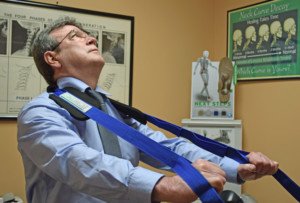
Photo credit: Aleesia Forni

